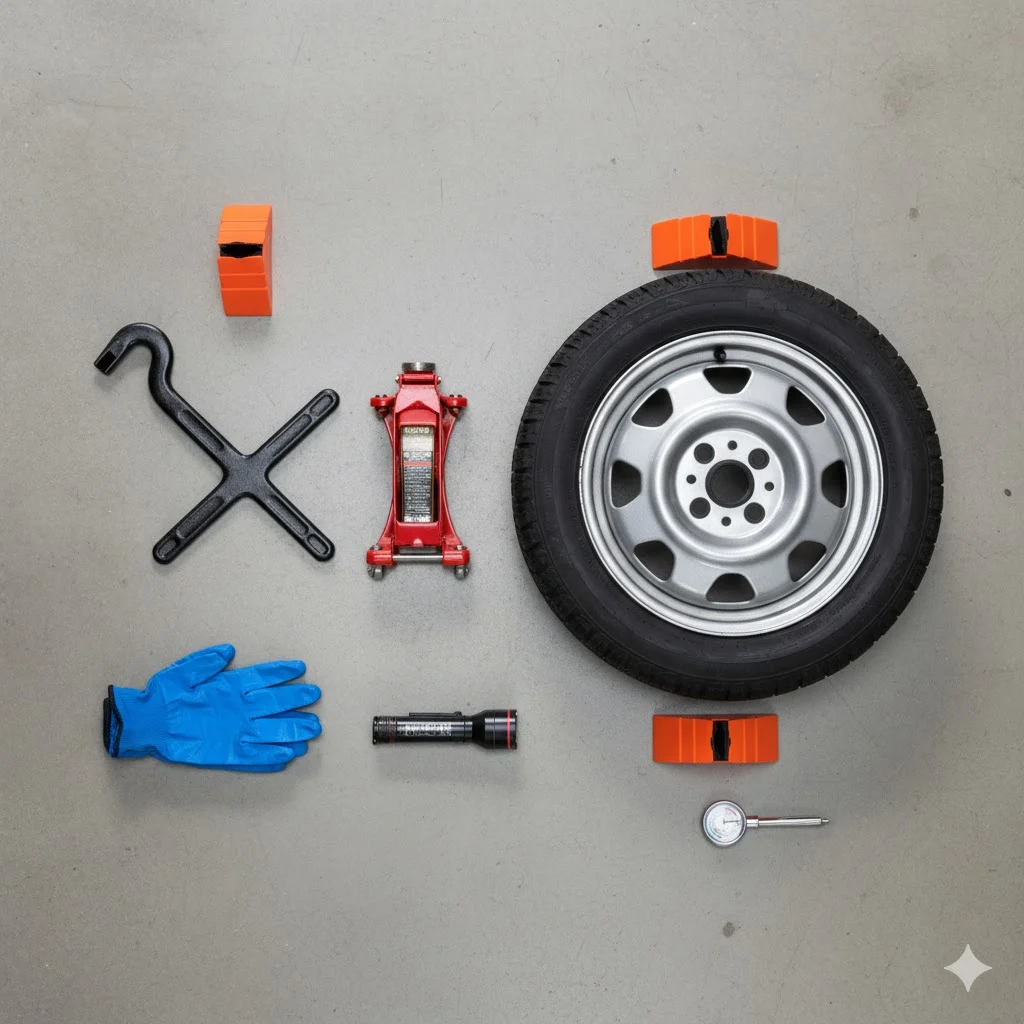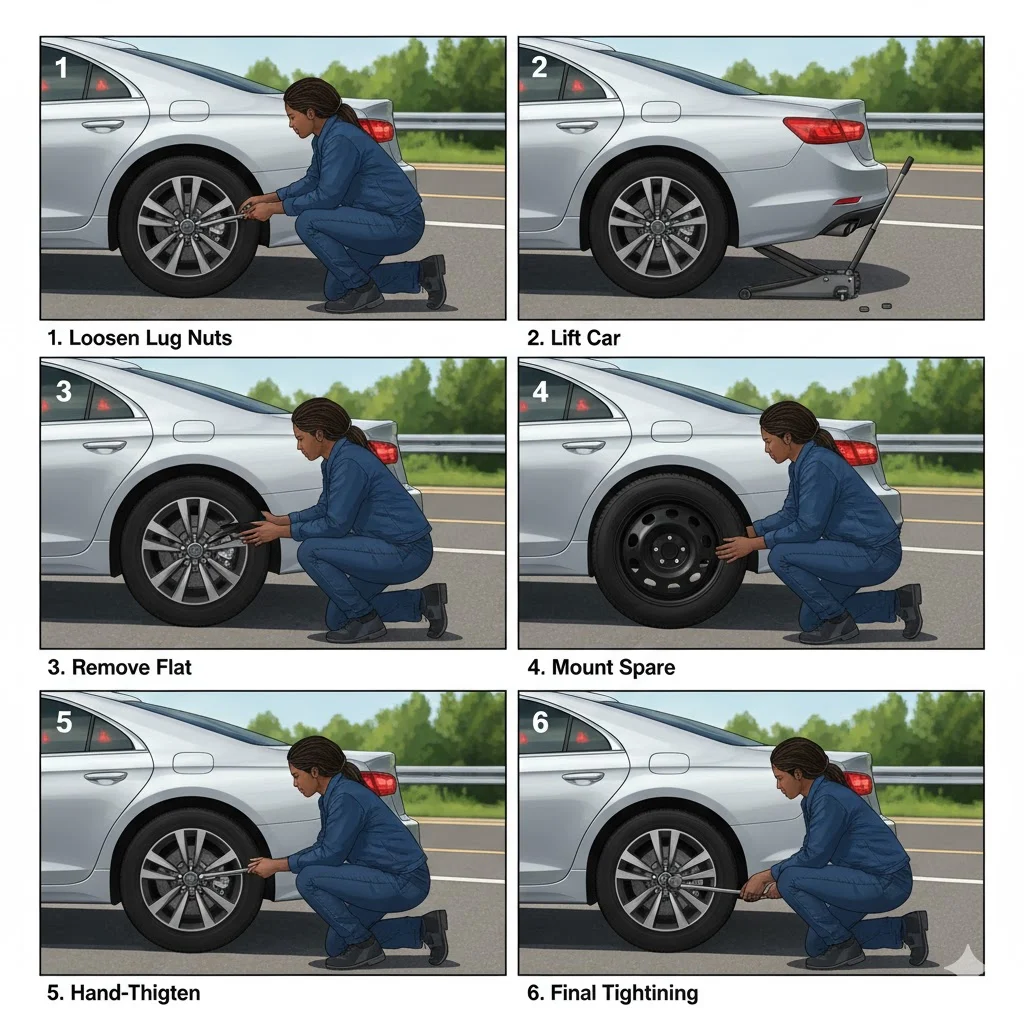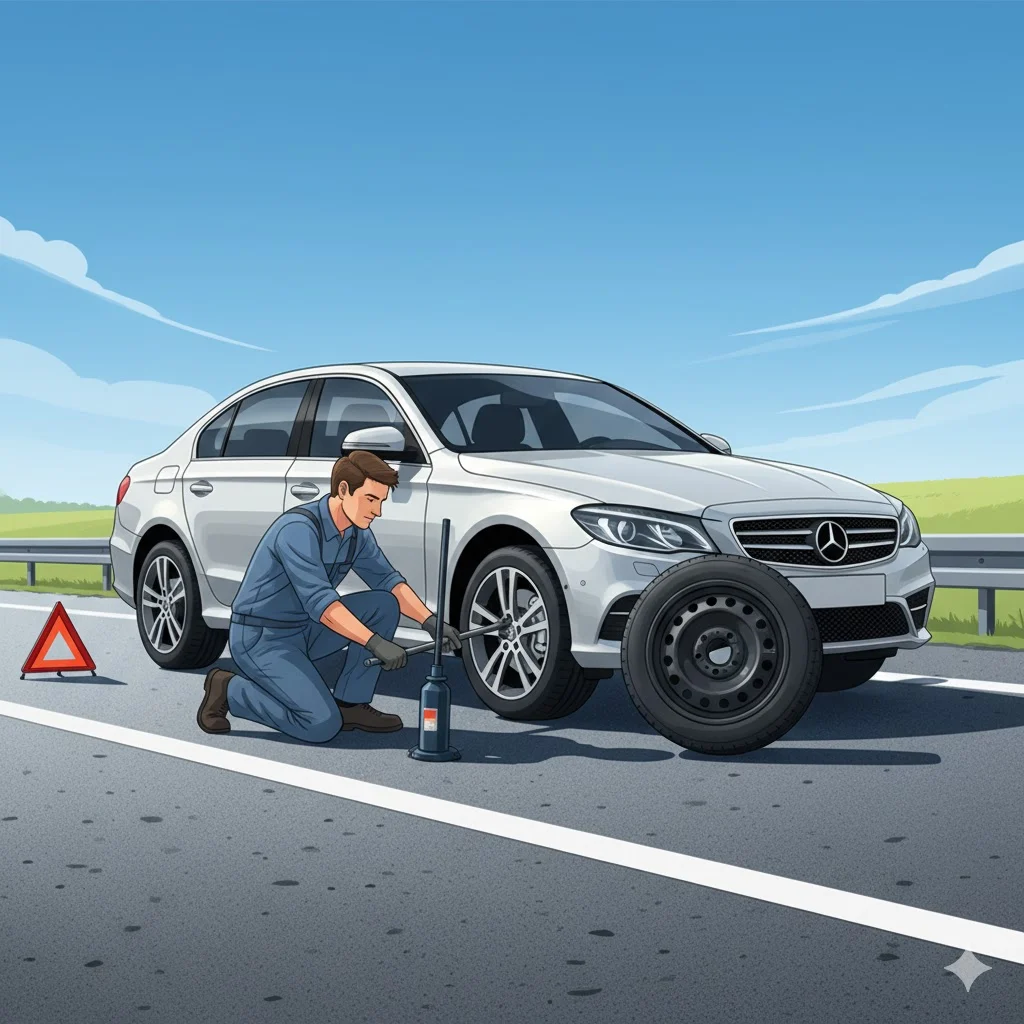Getting a flat tire can happen at the worst time. Whether you’re on the highway, running errands, or commuting to work, knowing how to change a tire is a must-have skill for every driver. This guide is designed to teach you how to safely and efficiently replace a flat tire, maintain your spare, and avoid common mistakes. By the end, you’ll be prepared for any tire emergency.
Why Knowing How to Change a Tire Matters
Flat tires are one of the most common roadside emergencies. According to the AAA Foundation for Traffic Safety, nearly 30 million drivers in the U.S. experience a flat tire each year. Knowing tire replacement skills saves time, money, and stress while keeping you safe.
Learning this skill also helps you:
- Avoid waiting for roadside assistance in unsafe locations
- Prevent further damage to your vehicle by driving on a flat tire
- Gain confidence handling car emergencies independently
Essential Tools for Changing a Tire

Before attempting to change a tire, make sure you have:
| Tool | Purpose |
|---|---|
| Spare Tire | Check if properly inflated and compatible with your vehicle |
| Jack | Lifts the vehicle safely off the ground |
| Lug Wrench | Removes lug nuts efficiently |
| Wheel Wedges | Prevents car from rolling |
| Vehicle Owner’s Manual | Provides model-specific instructions |
| Gloves | Keeps hands clean and protected |
| Flashlight | Helpful for low-light situations |
| Tire Pressure Gauge | Ensures the spare tire is correctly inflated |
💡 Pro Tip: Always inspect your spare tire at least once a month to ensure it’s ready for emergencies.
Step-by-Step Guide: How to Change a Tire

Changing a tire may seem intimidating, but breaking it down into steps makes it manageable.
Step 1: Find a Safe Location
If your tire goes flat while driving:
- Pull over to a flat, stable area away from traffic
- Turn on hazard lights to alert other drivers
- Avoid soft or sloped surfaces, which can be dangerous for using a jack
Step 2: Apply the Parking Brake and Wheel Wedges
- Engage the parking brake
- Place wheel wedges in front or behind the tires opposite the flat tire to prevent rolling
⚠️ Safety Tip: Never skip wheel wedges—they prevent accidents during the lift.
Step 3: Remove the Hubcap or Wheel Cover
- Use the flat end of the lug wrench to pry off the hubcap
- Keep the hubcap safe for reinstallation
Step 4: Loosen the Lug Nuts
- Turn lug nuts counterclockwise to loosen them
- Do not remove them completely yet
💡 Pro Tip: Use your body weight to get extra leverage if the nuts are tight.
Step 5: Lift the Vehicle with the Jack
- Consult your vehicle manual for the jack placement point
- Lift the car until the flat tire is about 6 inches off the ground
⚠️ Warning: Avoid placing the jack on soft or uneven surfaces; use a board under the jack if needed.
Step 6: Remove the Lug Nuts and Flat Tire
- Remove lug nuts completely and place them somewhere safe
- Pull the flat tire straight off the wheel bolts
Step 7: Mount the Spare Tire
- Align the spare tire with the lug bolts
- Push it onto the hub and hand-tighten lug nuts
💡 Pro Tip: Ensure the spare is seated flush against the hub to prevent wobbling.
Step 8: Lower the Vehicle and Tighten Lug Nuts
- Carefully lower the car back to the ground using the jack
- Tighten lug nuts in a star pattern for even pressure
⚠️ Common Mistake: Tightening in a circular pattern can cause uneven torque and wheel wobble.
Step 9: Replace the Hubcap
- Reinstall the hubcap or wheel cover if applicable
Step 10: Check Tire Pressure
- Ensure the spare tire is inflated to the recommended pressure in your vehicle manual
- Drive cautiously and have the flat tire repaired or replaced immediately
Additional Tips for Changing a Tire Safely
- Wear gloves to protect your hands
- Practice at home before encountering a real emergency
- Never attempt on steep slopes or busy highways
- Keep a flashlight and reflective vest in your car for night emergencies
- Always check the condition of your spare tire
Common Mistakes to Avoid
- Forgetting wheel wedges → car can roll
- Tightening lug nuts in a circular pattern → uneven wheel pressure
- Ignoring jack placement → vehicle can slip
- Using worn or improperly inflated spare tires
Troubleshooting Common Issues
Stuck Lug Nuts
- Use a breaker bar for extra leverage
- Never apply excessive force without stabilizing the car
Flat Spare Tire
- Keep a tire repair kit or air compressor in case the spare is low
Changing Tire in Rain or Dark
- Use hazard lights, reflective gear, and a flashlight
- Try to stay on a flat, safe surface
Maintenance Tips for Your Spare Tire
- Check air pressure monthly
- Inspect for cracks, wear, or dry rot
- Rotate if it’s part of a full-size tire set
- Replace if older than 6–10 years, depending on manufacturer
Frequently Asked Questions (FAQs)
Q1: How long does it take to change a tire?
A: Usually 15–30 minutes, depending on experience and conditions.
Q2: Can I drive on a spare tire?
A: Yes, but only at low speeds (under 50 mph) and for short distances until repaired.
Q3: How often should I check my spare tire?
A: At least once a month or before long trips.
Q4: Can I change a tire alone?
A: Yes, but having help is safer and faster.
Q5: Do all cars come with spare tires?
A: Some newer cars have run-flat tires or tire repair kits instead.
Q6: What if the lug nuts are too tight?
A: Use a breaker bar for extra leverage while keeping the car stable.
Q7: Should I remove the hubcap before lifting the car?
A: Yes, it’s easier to remove while the wheel is on the ground.
Q8: Can I change a tire at night safely?
A: Yes, with hazard lights, reflective gear, and proper lighting.
Q9: How do I know the correct jack placement?
A: Check your vehicle owner’s manual for model-specific jack points.
Q10: What’s the difference between full-size and compact spare tires?
A: Full-size spares match your regular tires; compact spares are temporary and smaller.
Conclusion
Changing a tire may seem daunting at first, but with the right tools, proper safety precautions, and step-by-step guidance, it becomes a manageable task for any driver. By learning how to handle flat tires, maintain your spare tire, and avoid common mistakes, you can stay safe on the road and handle emergencies confidently.
Remember to always check your spare tire regularly, keep essential tools in your vehicle, and practice these steps in a safe environment. With these skills, you’ll never be stranded by a flat tire again, and you’ll gain peace of mind knowing you’re prepared for any car emergency.
💡 Pro Tip: Combine your knowledge with good tire maintenance habits, and your tires—and your journeys—will last longer and stay safer.




